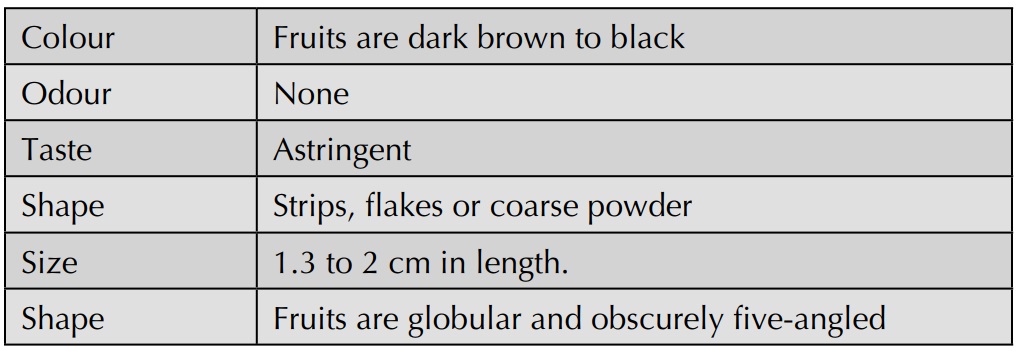Bahera
| Home | | Pharmacognosy |Chapter: Pharmacognosy and Phytochemistry : Drugs Containing Tannins
It consists of dried ripe fruits of the plant Terminalia belerica Linn, belonging to family Combretaceae.
BAHERA
Synonyms
Beleric myrobalan, baheda, bibhitak.
Biological Source
It consists of dried ripe fruits of the plant Terminalia belerica Linn, belonging to
family Combretaceae.
Geographical Source
The tree is found in all decidous forests of India, up to an
altitude of 1000 m. It is found in abundance in Madhya Pradesh, Uttar Pradesh,
Punjab, Maharashtra, and also in Sri Lanka and Malaya.
Cultivation and Collection
Cultivation of the drug, though not done on commercial
scale, can be carried out by sowing the seeds. The seeds can retain the
viability for a year and their rate of germination is about 80%. The plant can
also be raised by transplantation. It takes about 15 to 30 days for germination
of seed. Maximum height of the plant is about 40 m and the girth is 2 to 3 m.
The stem of the plant is straight the leaves are broadly elliptic and clustered
towards the end of the branches. Flowers are simple, solitary and in auxiliary
spikes.
Morphology
Transverse section shows an outer epicarp consisting of a
layer of epidermis, most of the epidermal cells elongate to form hair like
protuberance with swollen base; next to epidermis it contains a zone of
parenchymatous cells, slightly tangentially elongated and irregularly arranged.
Stone cells of varying shape and size are present in between these
parenchymatous cells. Mesocarp traversed in various directions by numerous
vascular bundles collateral, endarch; simple starch grains and rosettes of
calcium oxalate crystals are present in parenchymatous cells.

Chemical Constituents
The fruits contain about 20 to 30% of tannins and 40 to 45%
water-soluble extractives. It contains colouring matter. It contains gallic
acid, ellagic acid, phyllemblin, ethyl gallate, and galloyl glucose. The seeds
contain nonedible oil. The plant produces a gum. It also contains most of the
sugars as reported in myrobalan.
Uses
Bahera is used as an astringent and in the treatment of
dyspepsia and diarrhoea. It is a constituent of triphala. The purgative
property of half ripe fruit is due to the presence of fixed oil. The oil on
hydrolysis yields an irritant recipe. Gum is used as a demulcent and purgative.
Oil is used for the manufacture of soap.
Marketed Products
It is the chief component of the preparation known as Sage
triphala syrup (Sage Herbals), for relieving habitual constipation.
